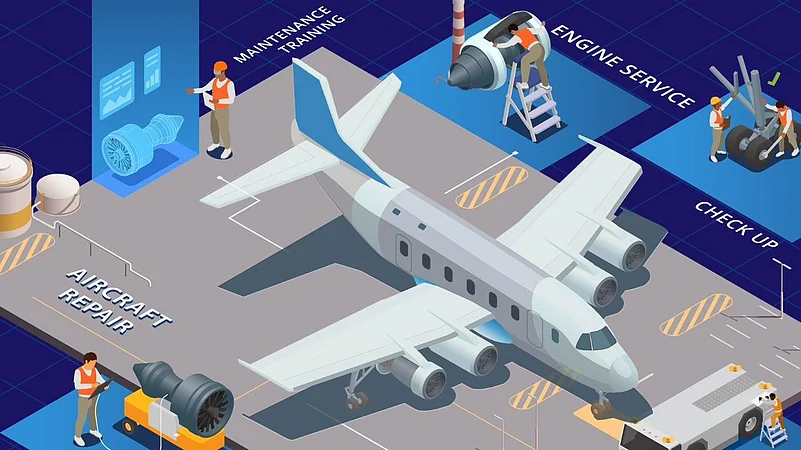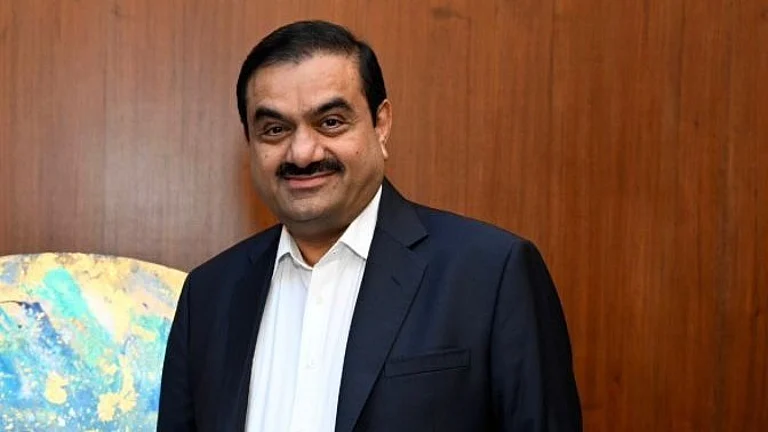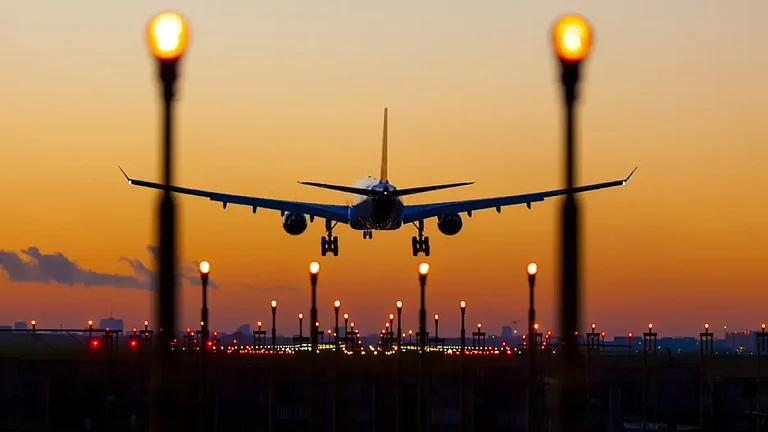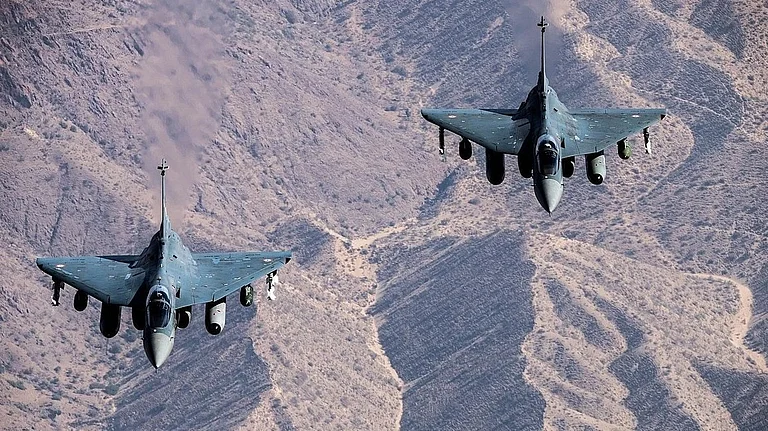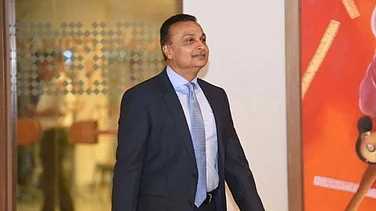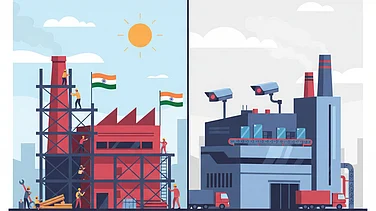The recent Air India Ahmedabad plane crash and the subsequent surge in safety and security concerns have thrust India’s civil aviation sector into the spotlight. Among the key areas drawing attention is the maintenance, repair and overhaul (MRO) sub-sector, which plays a critical role in ensuring the airworthiness of aircraft. Following the incident, the MRO industry has taken a leading role in discussions on aviation safety and infrastructure, with increased regulatory scrutiny. The sector has also attracted fresh interest after the billionaire Gautam Adani-led Adani Group, acquired an 85.1% stake in homegrown MRO firm Air Works India (Engineering) Pvt for ₹400 crore on July 1, marking a significant consolidation in aviation infrastructure.
Despite the Narendra Modi-led government’s regulatory push through various policies and incentives, experts have pointed out that the Indian MRO industry is still at a nascent stage, with several unaddressed issues hindering its growth.
Pragya Priyadarshini, managing director-aviation and ports lead, at Primus Partners, a management consulting firm, told Outlook Business that due to challenges such as original equipment manufacturer (OEM) dominance and aftermarket monopoly, regulatory and certification barriers, as well as infrastructure and cost bottlenecks, less than a quarter of India’s MRO demand is fulfilled within the country. Most of it is outsourced to countries like Singapore, UAE and Malaysia, highlighting (India’s) huge dependence on foreign countries and players.
“Despite India’s massive civil aviation growth—positioning it as the world’s third-largest aviation market—the country’s MRO industry has not kept pace. Only around 15-20% of India’s MRO demand is fulfilled domestically, with nearly 80% outsourced to countries like Singapore, UAE and Malaysia,” says Priyadarshini.
This reliance on foreign MRO services persists despite growth forecasts. The Indian MRO industry is projected to grow at an 8.9% compound annual growth rate (CAGR) from $1.7bn in 2021 to $4bn by 2031. Airlines in India spend around 12 to 15% of their overall revenues on maintenance, which becomes the second most expensive item after fuel (45% of operating expenses), according to a Niti Aayog report.
The MRO industry comprises several players like OEMs, airline operators, service providers, vendors and manufacturers of parts or spares. These players largely contribute to four segments, including line and base maintenance, aircraft components, engines and airframes. While Indian companies like Air India Engineering Services, Air Works India (Engineering), Indamer Aviation, Taj Air and GMR Aero Technic have had a presence in the sector for decades, they are still far from meeting even 50% of the MRO-related requirements of domestic airlines.
Moreover, three Indian MROs accounted for 90% of the industry revenue in 2024, highlighting the dominance of a few players, according to a Crisil report. To cater to individual needs, Indian airlines like IndiGo have started managing their own MRO services but India lags significantly in terms of third-party MROs.
Gaps in Policy Push
The government has introduced several regulatory frameworks to promote the growth of domestic MROs and bring them on par with global players, including the National Civil Aviation Policy of 2016 and the MRO Policy of 2021. To encourage companies to set up MROs in India, the government has lowered the GST on domestic firms from 18% to 5%, waived customs duty on tools, toolkits and spares and allowed 100% foreign direct investment (FDI) via the automatic route. The 2021 MRO Policy, introduced to promote the use of Indian MRO services and self-reliance in the sector, offers support such as the abolition of the Airports Authority of India’s royalty and streamlined land allotment for setting up facilities.
But experts feel these measures are not enough to make India atmanirbhar in the MRO industry.
(Retd) Air vice marshal and former executive director of Indamer-Mjets, Surya Narayana Murti, told Outlook Business that the proximity of MROs to airports is crucial for seamless operations and cost benefit. But at present the limited allocation of land for MRO hangars near airports, particularly in metros, increases logistics costs.
“Though the new aviation policy has tried to address some of these issues by reducing GST, customs duty exemption on spares imports and reducing land leasing rates, some such exemptions may not be applicable at airports being constructed and operated under the public-private partnership model,” says Murti.
On the other hand, to become a global hub and attract foreign carriers to avail services in the country, Indian MROs need to have certifications from international agencies such as the European Union Aviation Safety Agency (EASA) and the Federal Aviation Administration (FAA).
"Indian MROs primarily operate under Directorate General of Civil Aviation (DGCA) certification, which is not recognised in major international markets. This restricts Indian MROs from servicing foreign-registered aircraft unless they obtain expensive EASA or FAA certifications,” says Priyadarshini.
Technology & Talent Trouble
While Indian companies have a presence in MRO operations related to line and base maintenance, where line maintenance covers routine daily servicing at the airport and base maintenance involves more extensive repairs and overhauls at dedicated facilities—as well as aircraft components and airframes, they are hugely dependent on OEMs for engine maintenance. Their maintenance constitutes almost 60% of the total MRO outlay, whereas the component, line and base segments form around 22%, 8% and 10% respectively, a report by Niti Aayog stated.
Indian MROs lag far behind their foreign counterparts in engine maintenance as OEMs have monopolistic influence over critical data and intellectual property.
“OEMs exert significant control over critical data and intellectual property, restricting access to essential information and sharing it only on a need-to-know basis, often at exorbitant costs,” says Murti.
Moreover, foreign aircraft engine OEMs such as General Electric (GE), Safran, Rolls-Royce and Honeywell control the aftermarket engines, avionics and key components market and often reserve preferential prices for their own authorised MRO affiliates, Priyadarshini added.
When it comes to talent, the Indian MRO industry is largely a labour-intensive one and consists of multiple roles. The skilled roles comprise aircraft maintenance engineers, service engineers, quality inspectors, safety inspectors, airworthiness engineers and safety and compliance managers. The semi-skilled roles consist of ground support staff, part handlers, logistics coordinators, tool room and anchor assistants and technicians for basic structure and interior maintenance.
Chief executive of TeamLease Degree Apprenticeship, Nipun Sharma, told Outlook Business that India has around 7,000 aircraft maintenance engineers and the prediction is that with over 1,200 aircraft orders in place, the MRO sector alone would require about 72,900 trained technicians and aircraft maintenance engineers by 2035. The present gap between what we have and what India will need is due to multiple factors.
“First, there is a limited number of quality institutions and the mismatch in the curriculum and industry requirements. Second, due to infrastructure deficiencies, on-the-job training opportunities are also very limited. Third, while there is a lot of awareness among the youth regarding pilot and cabin crew-related jobs, the MRO industry lacks that visibility. The lack of awareness is another crucial challenge that hinders the industry in attracting new talent,” says Sharma.
While the government is building airports under the regional connectivity scheme Ude Desh Ka Aam Nagrik (UDAN), getting the required talent in those places to support the MRO industry is an unaddressed challenge.
“As the airport infrastructure is expanding to tier 2 and 3 cities as well, to support industry there, it would require regional skilling centres because one does not expect a metro child to go and stay in Ayodhya, Guwahati, Nagpur or Trichy,” Sharma added.
While stakeholders, including the government and airlines, have focused on infrastructure and fleet expansion, the capacity enhancement required to support the MRO industry to ensure safety and security in air travel requires serious fixes to cater to domestic needs and become a global hub.






